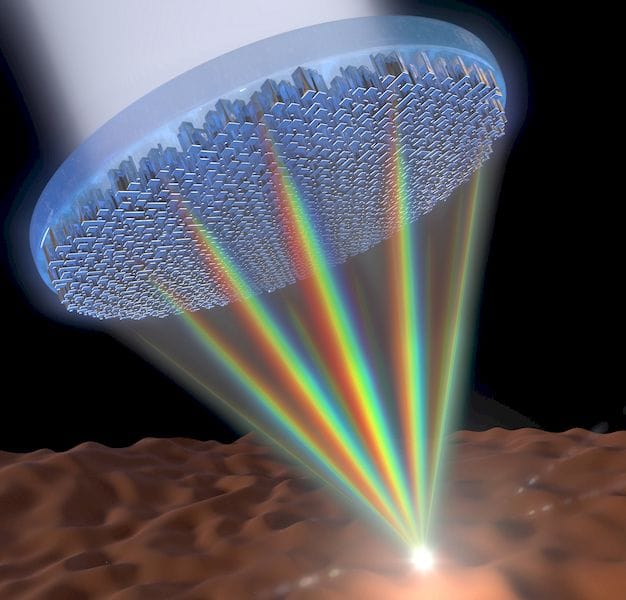
I’m reading about a new technology called “meta lenses”, and wondering how it might benefit 3D printing.
Current lenses have a peculiar problem that is only apparent when you require very fine resolutions: achromatic aberration. The concept is that light is composed of different wavelengths, as you might recall from the rainbow created by prisms.
The reason prisms do this is because each particular wavelength is refracted slightly differently. Thus the prism spreads out the light according to wavelength, from blue to red.
A standard lens has the same issue, because a lens is simply a prism in a slightly different shape. Different wavelengths are refracted into slightly different positions, meaning your image is somewhat messed up as the reds are not in quite the same position as your blues, for example.
Normally this is somewhat mitigated by adding additional corrective lenses, but this adds cost and weight and cannot be used in every application.
Enter metalenses. These are flat transparent microstructures that are covered with very tiny optical blades that together can work like a lens by redirecting incoming light. The blades are designed to focus ALL wavelengths of light on the same spot.
This is an interesting development that could be of great interest to smartphone manufacturers and virtual reality goggle makers.
But could it be of interest to 3D printer manufacturers? Could an unusual 3D printing process be developed using this technology? I would not be surprised to find researchers investigating this possibility.
But what could it be? Some ideas:
It may be possible to more finely focus a powerful laser beam in 3D printing processes that employ lasers. DMLS or SLS-like systems that impact a powder bed could perhaps use metalenses to focus the beam to a smaller point when it impacts the print bed. This could reduce the size of the meltpool and thus potentially increase print resolution.
However, such a step might run into another barrier to resolution: powder size. The minimum resolution a powder-based machine could have should be the size of the particles being bonded together. It may be that more finely focused lasers could create a demand for even finer powders.
Another possibility is to increase the resolution of SLA machines, which solidify photopolymer resin. In a manner similar to the idea above, the laser’s active area could be reduced as it impacts the liquid photopolymer. This would have similar effects; increased resolution.
There would be another effect as well: increased print time. Smaller meltpools and laser spots will imply more movement requirements to ensure complete coverage of each 3D printed layer. That’s perhaps not a good thing, unless the size of the prints are small.
Another crazy idea might be to create an array of metalenses, perhaps each corresponding to a voxel of a print layer. With an interesting arrangement of input lasers, it might be possible to print an entire layer simultaneously.
But these are simply crazy ideas; I’d let the researchers figure out methods that actually work.
Via Phys Org

